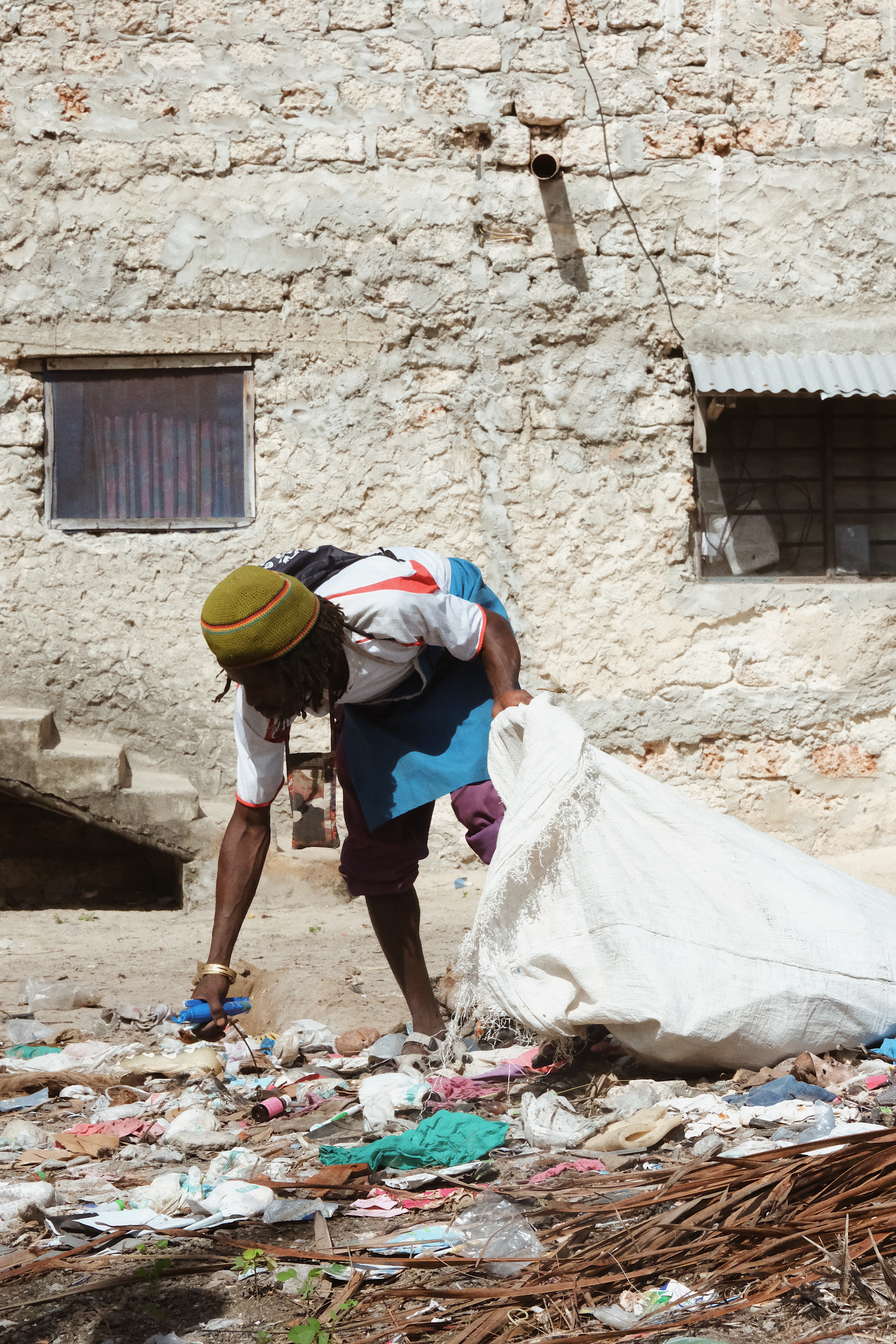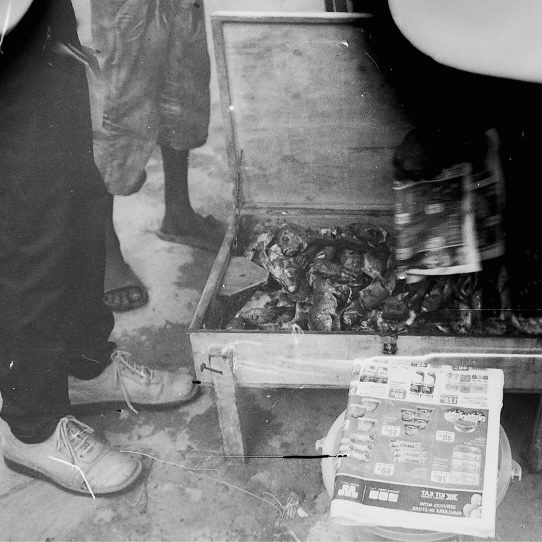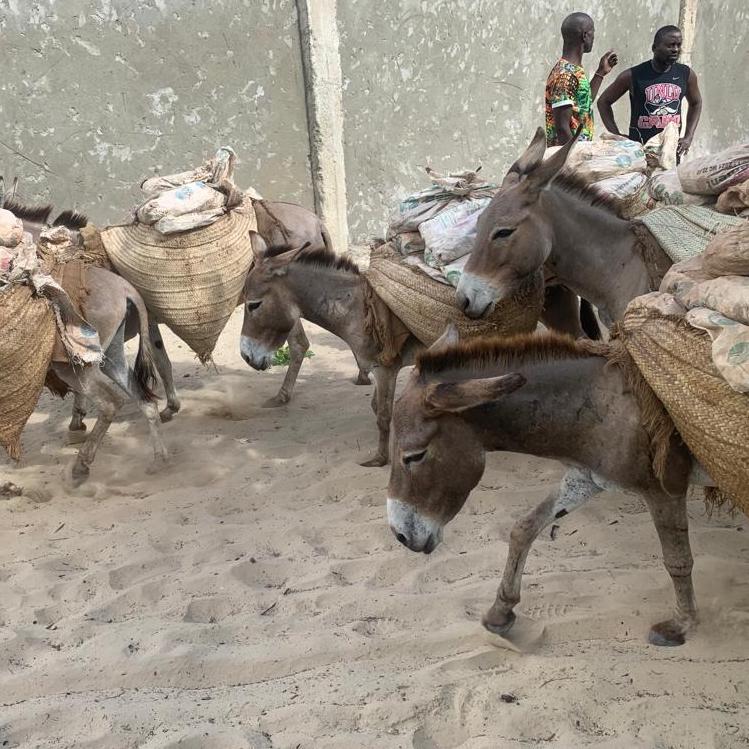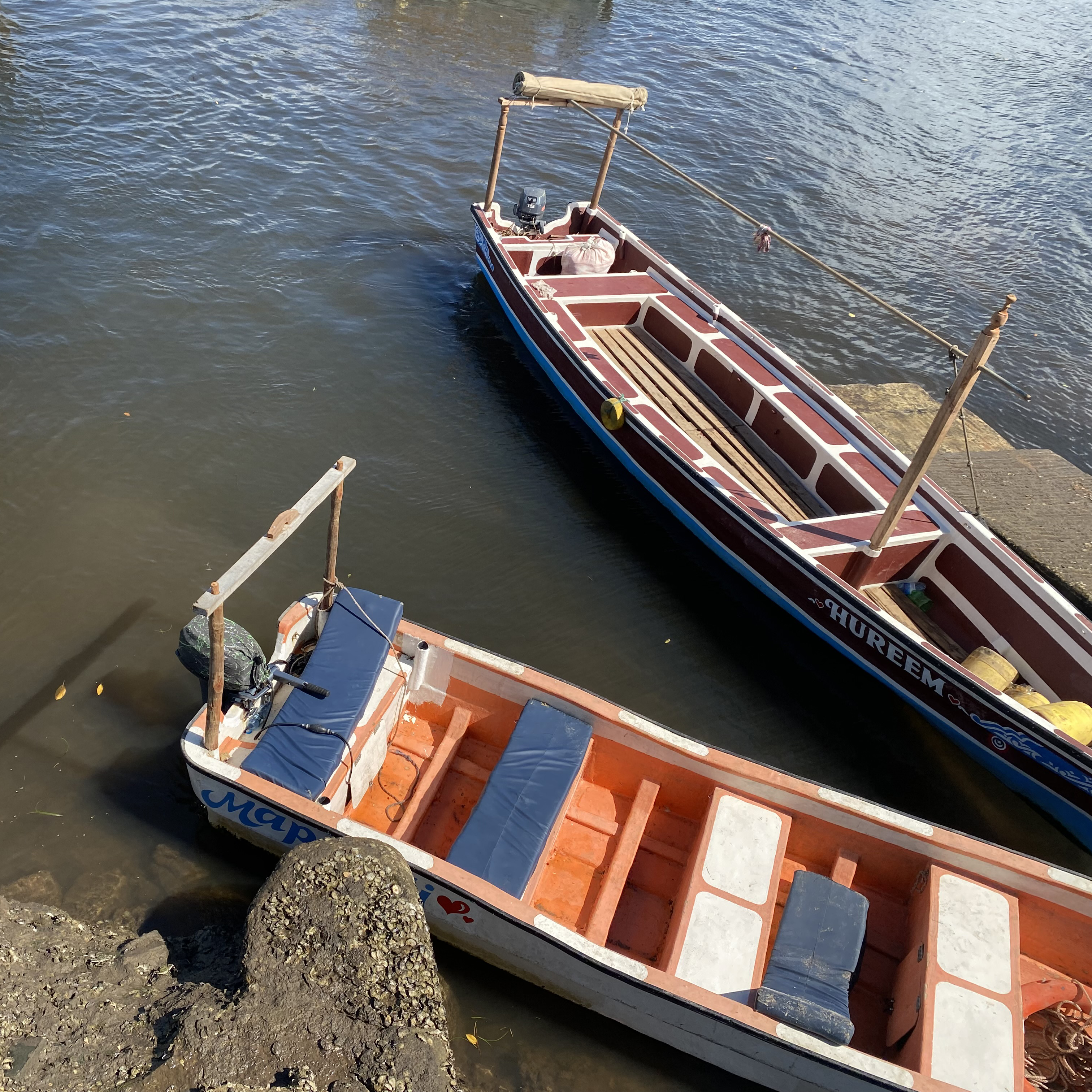Ng'amba // Plastic:
Maji yakishamwagika hayazoleki tena //
Once Water Has Been Spilled, It Cannot Be Recovered
Through the stories of local residents, the film delves into the impacts of plastic waste on the community and its environment.
Our documentary, "Ng'amba: Maji yakishamwagika hayazoleki tena" (Once Water Has Been Spilled, It Cannot Be Recovered), explores the issue of plastic pollution in Lamu Island, Kenya.
It highlights the challenges in waste management, the local initiatives for handling plastics such as PET, and the economic inequalities that complicate these efforts.
The films aims to raise awareness about the complex, global nature of plastic pollution and its local impact on Lamu island.
Authors
Ahmed Adhan
Ruth Lozi
Nadja Nievergelt
Henning Weiss
Projects
What is truly disposable?
This seemingly simple question reveals more than meets the eye. It is a question that relates to what we consider less important, less valuable, and less necessary. It encourages us to reflect on the ease with which we grant both material and immaterial things worthlessness. How is it that we view certain objects and even people as disposable, and what are the wider consequences of this disposability?
In contemporary western discourse there is frequent dialogue surrounding our consumer society, which is tied the desire to purchase new things, use and then dispose of them, turning these objects into waste (Crocker 2012, 1,2; Goodwin et al. 2008, 1,4). That moment of an object turning into waste is often considered somebody else’s problem (Crocker 2012, 1). Waste is out of sight and out of mind (Barnes 2019, 1), encapsulated by the NIMBY syndrome meaning “Not in my back yard” (Dalzero 2021, 207). But the question is in whose back yard then? Who must carry the burden of disposability?
During the six weeks I spent in Lamu, Kenya, I became very curious about these very issues. Working alongside two members of the Lamu Youth Alliance and a fellow student from the University of Basel, we immersed ourselves in the community's approach to plastic waste and the lives of waste pickers. As we learnt our way through the everyday landscape of discarded materials, the question of what we throw away and why stayed present in my mind during both the research and writing phases of this paper. In Lamu, the discarded pieces of plastic felt like a reflection of the cultural, economic, and historical complexity of the island, showing how deeply the concept of disposability is entangled in local and global life.
In contemporary western discourse there is frequent dialogue surrounding our consumer society, which is tied the desire to purchase new things, use and then dispose of them, turning these objects into waste (Crocker 2012, 1,2; Goodwin et al. 2008, 1,4). That moment of an object turning into waste is often considered somebody else’s problem (Crocker 2012, 1). Waste is out of sight and out of mind (Barnes 2019, 1), encapsulated by the NIMBY syndrome meaning “Not in my back yard” (Dalzero 2021, 207). But the question is in whose back yard then? Who must carry the burden of disposability?
During the six weeks I spent in Lamu, Kenya, I became very curious about these very issues. Working alongside two members of the Lamu Youth Alliance and a fellow student from the University of Basel, we immersed ourselves in the community's approach to plastic waste and the lives of waste pickers. As we learnt our way through the everyday landscape of discarded materials, the question of what we throw away and why stayed present in my mind during both the research and writing phases of this paper. In Lamu, the discarded pieces of plastic felt like a reflection of the cultural, economic, and historical complexity of the island, showing how deeply the concept of disposability is entangled in local and global life.
To delve deeper into the topic surrounding waste, particularly plastic waste and waste workers in the context of Lamu, I was inspired by Lucy Bell’s paper “Place, People, and Processes in Waste Theory: A Global South Critique (Bell 2019). In it she critiques the fact that traditional waste theories predominantly take European and US-centered perspectives that often ignore the realities of the Global South (ibid, 99-100). These theories usually assume a physical and ideological distance from waste, which is not the case in many communities in the Global South including, from my observations, Lamu (ibid, 101).
Waste is present, it is visible and so are those who work with it.
(Abdallah Interview 2024; Ali Interview 2024; Issa Interview 2024). This is why Bell's critique guided my seminar paper, namely that I wanted to fulfil her call to understand waste from the perspective of those who live with, on, and beside it (Bell 2019, 98).
Waste is present, it is visible and so are those who work with it.
For countless people in places like Lamu, waste is an immediate, everyday presence that affects and shapes their lives in profound ways
(Abdallah Interview 2024; Ali Interview 2024; Issa Interview 2024). This is why Bell's critique guided my seminar paper, namely that I wanted to fulfil her call to understand waste from the perspective of those who live with, on, and beside it (Bell 2019, 98).
Plastic boys
During our research, I found the story of a local plastic waste collector, Jassim, whose daily work is often stigmatized and overlooked, particularly touching (Issa Interview 2024). We shadowed Jassim in Lamu's newly built India quarter, where he gathers waste for pickup by Flipflopi, a local waste management group. India, unlike the well-kept parts of Lamu Town, relies heavily on local waste pickers like Jassim. As we began our interview, a group of young men laughingly called out to him “Rasta man”, a term which then characterized the conversation we were about to begin.
Jassim shared insights that reveal not only his daily and economic struggles, but also the broader societal attitudes towards his waste work and subsequent marginalization and stigmatization (Issa Interview 2024):
he remarked, his voice steady, but reflecting the burden of the societal scrutiny he is regularly facing (Issa Interview 2024). Derogatory remarks like “Rastaman is crazy” further illustrate a belief system that equates waste collecting with madness or failure, ignoring its environmental significance and its societal value. In areas on Lamu’s outskirts, where no governmental waste workers are present (Lee Fieldnotes 2024a), Jassim’s role is vital, yet stigmatized. This reflects a broader prejudice towards certain types of labor also seen globally, where waste work is often labeled as “dirty” or “impoverished”, “lack economic resources” or “prospects”, closely associated with the waste they collect or even equated with the waste itself (Kornberg 2020, 148; Vázquez 2016, 127; Porras Bulla, Rendon, and Espluga Trenc 2021, 1303).
Jassim shared insights that reveal not only his daily and economic struggles, but also the broader societal attitudes towards his waste work and subsequent marginalization and stigmatization (Issa Interview 2024):
“Young people feel ashamed to collect these things; they feel embarrassed to be seen collecting these things; they feel they look like me”,
he remarked, his voice steady, but reflecting the burden of the societal scrutiny he is regularly facing (Issa Interview 2024). Derogatory remarks like “Rastaman is crazy” further illustrate a belief system that equates waste collecting with madness or failure, ignoring its environmental significance and its societal value. In areas on Lamu’s outskirts, where no governmental waste workers are present (Lee Fieldnotes 2024a), Jassim’s role is vital, yet stigmatized. This reflects a broader prejudice towards certain types of labor also seen globally, where waste work is often labeled as “dirty” or “impoverished”, “lack economic resources” or “prospects”, closely associated with the waste they collect or even equated with the waste itself (Kornberg 2020, 148; Vázquez 2016, 127; Porras Bulla, Rendon, and Espluga Trenc 2021, 1303).
Jassim’s story raises important questions about the wider implications of waste, disposability, and invisibility.
(Meiu 2020, 225-26).
Meiu’s analysis highlights how plastic boys are marginalized not just for their economic status but also for handling the foreign and culturally degrading plastic objects. Both plastic boys and waste workers, through their association with plastic, confront judgments tied to the broader implications of disposability and societal invisibility.
This exploration into the lives of various waste workers in Lamu not only highlights the stigmatization they face, but also forces us to acknowledge and recognize their essential but overlooked contribution to our daily lives and the wellbeing of our environment. It prompts us to re-examine our notions of what constitutes valuable labour and challenges the origins of these ideas. By examining how waste is viewed as disposable, we see a parallel to how people who work with waste are similarly viewed as tainted by their association with the objects they handle. However, this stigma seems to vary depending on the context, history and type of waste handled, suggesting that the stigma attached to waste work is not uniform, but is influenced by these factors.
![]()
The stigma associated with what is often viewed as “dirty work” is not only physical, but also societal and moral, deeply impacting those who manage waste
(Meiu 2020, 225-26).
Meiu’s analysis highlights how plastic boys are marginalized not just for their economic status but also for handling the foreign and culturally degrading plastic objects. Both plastic boys and waste workers, through their association with plastic, confront judgments tied to the broader implications of disposability and societal invisibility.
This exploration into the lives of various waste workers in Lamu not only highlights the stigmatization they face, but also forces us to acknowledge and recognize their essential but overlooked contribution to our daily lives and the wellbeing of our environment. It prompts us to re-examine our notions of what constitutes valuable labour and challenges the origins of these ideas. By examining how waste is viewed as disposable, we see a parallel to how people who work with waste are similarly viewed as tainted by their association with the objects they handle. However, this stigma seems to vary depending on the context, history and type of waste handled, suggesting that the stigma attached to waste work is not uniform, but is influenced by these factors.










